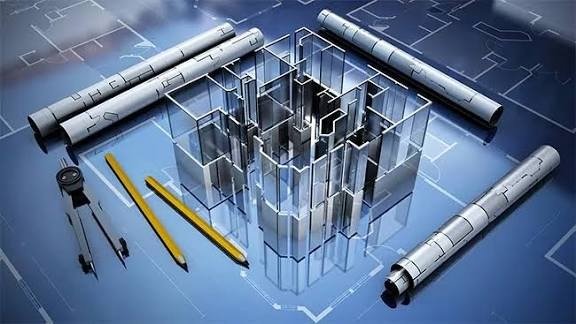When it comes to construction, landscaping, mining, and industrial projects, having access to the right equipment can make or break the success of the job. While purchasing heavy machinery might seem like the obvious solution, it’s not always the most practical or cost-effective choice. This is where heavy equipment rental comes into play. Renting gives businesses and contractors flexibility, access to modern machines, and financial savings without the burden of ownership.
In this ultimate guide, we’ll explore everything you need to know about heavy equipment rental—from its advantages to how to choose the right equipment for your project.
Why Choose Heavy Equipment Rental?
Heavy equipment is a major investment, often costing thousands to millions of dollars. For many businesses, especially small contractors or those taking on short-term projects, buying equipment simply doesn’t make sense. Here’s why renting is an attractive option:
- Lower Upfront Costs
Renting eliminates the large upfront expense of purchasing new equipment. Instead, businesses only pay for what they use, freeing up capital for other project needs. - Flexibility for Short-Term Projects
If you only need a bulldozer, excavator, or crane for a few weeks or months, renting makes far more sense than purchasing equipment that will sit unused afterward. - Access to Modern Machinery
Rental companies regularly update their fleets with the latest models. This ensures renters have access to advanced features, fuel efficiency, and enhanced safety technologies. - Reduced Maintenance Responsibilities
Owning heavy machinery means investing time and money in ongoing maintenance, repairs, and inspections. Rental companies handle this for you, saving costs and headaches. - Test Before You Buy
Renting provides an opportunity to try out different models or brands before committing to a purchase.
Types of Heavy Equipment Available for Rent
Rental companies offer a wide range of equipment to suit different industries and projects. Common categories include:
- Earthmoving Equipment: Excavators, bulldozers, backhoes, and loaders for digging, grading, and site preparation.
- Lifting Equipment: Cranes, forklifts, and telehandlers for moving heavy materials vertically or horizontally.
- Roadwork Equipment: Asphalt pavers, compactors, and graders for road construction and maintenance.
- Aerial Work Platforms: Boom lifts, scissor lifts, and man lifts for safe access to elevated work areas.
- Demolition Equipment: Hydraulic breakers, wrecking balls, and skid steers fitted with demolition attachments.
- Material Handling: Conveyors, trailers, and industrial trucks designed for transporting heavy goods.
Whether you’re building a skyscraper, laying roads, or clearing land, rental companies can provide the equipment you need.
ALSO READ: Whitstable Rental Yields: A Smart Spot for Landlords?
How to Choose the Right Equipment for Your Project
Selecting the correct machine is crucial to efficiency, cost savings, and safety. Here are some factors to consider:
- Project Scope and Requirements
Evaluate the scale of your project. Large excavation projects may require an excavator, while smaller jobs may only need a mini-excavator or skid steer. - Jobsite Conditions
Assess the terrain, soil type, and weather. For example, rough terrain may require all-terrain forklifts or crawler cranes instead of standard models. - Duration of Use
Estimate how long the equipment will be required. Short-term use makes renting the better choice, while long-term recurring needs may justify buying. - Budget
Determine how much you’re willing to spend. Renting allows you to stick to a budget while still accessing high-quality equipment. - Operator Skills
Ensure that your crew has the proper certifications and training to handle the rented equipment. Some rental companies also provide trained operators as part of their service.
The Rental Process: Step-by-Step
Understanding the process makes renting equipment straightforward and hassle-free.
- Identify Needs
Start by listing the equipment required for your project and the estimated rental duration. - Research Rental Providers
Choose reputable rental companies that have well-maintained fleets, flexible contracts, and positive reviews. - Request a Quote
Get detailed estimates that include rental fees, insurance, delivery, pickup, and fuel policies. - Inspect the Equipment
Before signing, examine the machine for any damage, check maintenance records, and test basic functionality. - Sign the Agreement
Review rental terms, including return policies, damage liability, and operator requirements. - Delivery and Operation
Arrange transportation of the equipment to your site. Some companies deliver directly, while others require pickup. - Return and Inspection
Once your project is complete, return the equipment in good condition to avoid penalties.
Tips for Saving Money on Heavy Equipment Rental
While renting is already cost-effective, there are additional strategies to maximize savings:
- Plan Ahead: Book equipment early to avoid last-minute rental price hikes.
- Choose the Right Size: Oversized machinery wastes money on fuel and rental fees. Match the equipment to your actual needs.
- Bundle Rentals: Many companies offer discounts when you rent multiple machines together.
- Use Trained Operators: Proper use minimizes the risk of accidents and damage, saving on repair costs.
- Return on Time: Avoid unnecessary late fees by sticking to the rental timeline.
Common Mistakes to Avoid When Renting Heavy Equipment
- Ignoring Insurance Requirements – Always ensure that insurance coverage is in place for potential damages.
- Not Reading the Contract Thoroughly – Overlooking fine print can lead to unexpected charges.
- Skipping Equipment Inspection – Document the condition before use to avoid being held responsible for pre-existing damage.
- Underestimating Training Needs – Unskilled operators can cause costly delays and accidents.
- Renting Unnecessary Equipment – Only rent what you truly need to optimize costs.
The Future of Heavy Equipment Rental
The heavy equipment rental industry continues to grow, driven by technology and demand. Key trends include:
- Telematics and IoT Integration: Machines equipped with GPS and sensors allow real-time monitoring of usage, fuel consumption, and maintenance needs.
- Sustainable Equipment: Hybrid and electric equipment options are emerging to reduce environmental impact.
- On-Demand Rentals: Digital platforms make it easier than ever to browse, book, and manage rental equipment online.
These advancements mean more efficiency, reduced costs, and greater convenience for businesses.
Conclusion
Heavy equipment rental has become a game-changer for contractors, builders, and industries needing cost-effective access to specialized machinery. It provides flexibility, reduces financial risks, and ensures projects run smoothly without the long-term burden of ownership.
By understanding the rental process, choosing the right machines, and working with trusted providers, businesses can maximize the benefits of renting heavy equipment. Whether you’re managing a large-scale construction site or a small landscaping job, rental equipment can help you complete your project on time and within budget.
For those looking for reliable rental solutions in Western Canada, companies like https://www.rentcoequipment.com/ offer a wide range of heavy machinery to meet diverse project needs.
YOU MAY ALSO LIKE: The Complete Guide to Getting a Second Mortgage in Canada










